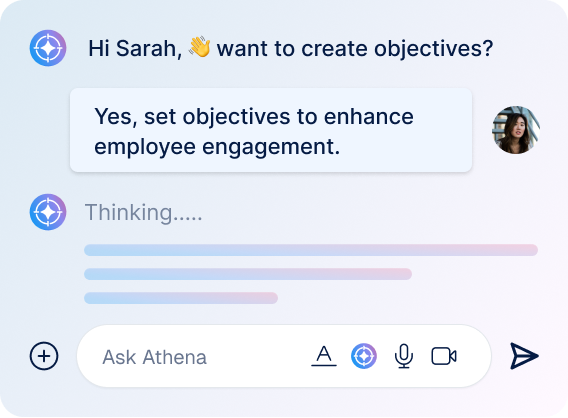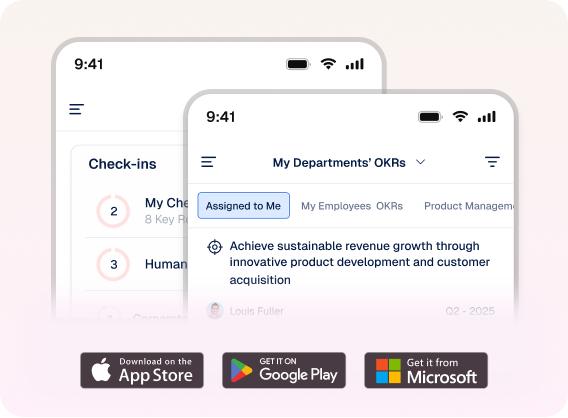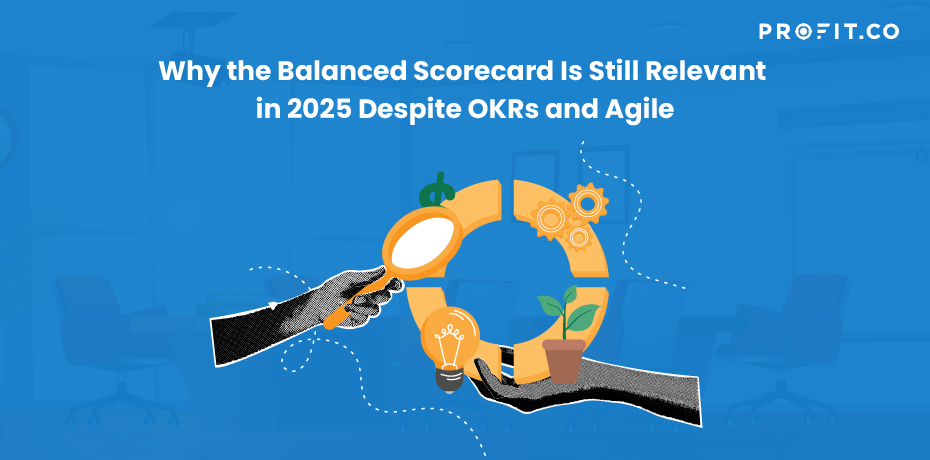TL;DR
While OKRs and Agile dominate business conversations in 2025, the Balanced Scorecard remains uniquely relevant because it does what these newer frameworks can’t: provide a complete strategic picture. Unlike OKRs (which focus on goals) or Agile (which emphasizes speed), the Balanced Scorecard connects across all business dimensions, making it irreplaceable for comprehensive strategic management.The Balanced Scorecard remains one of the most widely adopted strategy tools across sectors, including business, government, and nonprofit organizations. It’s in active use by a majority of large enterprises across the U.S., Europe, and Asia, with adoption steadily increasing in regions like the Middle East and Africa.
The Modern Business Challenge
Today’s business environment demands speed, focus, and adaptability. Businesses are expected to:
- Adapt quickly to market shifts
- Show immediate results to stakeholders
- Keep employees aligned and engaged
- Balance short-term wins with long-term growth
- Make sense of overwhelming data
OKRs and Agile deliver on many of these needs. The Balanced Scorecard is now a holistic system for managing strategy. A key benefit of using a disciplined framework is that it gives organizations a way to “connect the dots” between the various components of strategic planning and management, meaning that there will be a visible connection between the projects and programs that people are working on, the measurements being used to track success (KPIs), the strategic objectives the organization is trying to accomplish, and the mission, vision, and strategy of the organization.
Vision is a destination – a fixed po to which we focus all effort. Strate is a route – an adaptable path to g us where we want to go.
The OKR Strengths – Focus
- Clear, measurable objectives
- Short-term team alignment
- Stretch goals and ambition
- Quarterly accountability
Where Balanced Scorecard Can Complement
- Focused on broader strategy
- View of organizational health
- Long-term visibility
- No metric tunnel vision
Example: A tech company set an OKR to “Increase user engagement.” They hit it by sending more push notifications. Engagement rose. The OKR was met. With a Balanced Scorecard in the picture, the strategic goal to reduce churn was also mapped in.
Agile Strengths – Speed
- Fast iteration
- Customer feedback loops
- Adaptable teams
- Cross-functional collaboration
Where Balanced Scorecard Can Complement
- Prioritizes process over purpose
- Long-term strategic lens
- Connection to financial or strategic goals
Why the Balanced Scorecard Still Matters in 2025
The Complete Picture Advantage
OKRs and Agile focus on what to do and how to do it quickly. The Balanced Scorecard answers why.
It connects four critical perspectives:
- Learning & Growth (Are we building future capabilities?)
- Internal Processes (Are operations improving?)
- Customer (Are we delivering value?)
- Financial (Are we achieving results?)
Example: A software company used OKRs for product updates and Agile for delivery. Their BSC revealed low investment in team development (Learning & Growth), which hurt code quality (Process), dropped satisfaction (Customer), and ultimately hurt renewals (Financial).
OKRs state outcomes. The BSC maps out how those outcomes happen.
OKR View: “Increase customer retention”
Balanced Scorecard View:
- Invest in training (Learning)
- Improve support response time (Internal Process)
- Boost customer satisfaction (Customer)
- Retain more customers (Financial)
The Balanced Scorecard is like your business’s annual check-up. OKRs and Agile are your workouts and meals. They’re all necessary but only one gives you the full health report.Tweet
It tells the story behind the metrics and makes sure the balanced health of the strategic goals are met.
OKRs and Agile keep you moving. The BSC ensures you’re moving in the right direction long-term. It answers:
- What should we build now for future advantage?
- Are we making trade-offs we’ll regret?
- Are we investing in sustainable success?
The Strategic Alignment Solution
In 2025, speed without alignment is chaos. BSC aligns departments across strategy.
Example:
- Marketing wants leads
- Sales wants conversions
- Product wants UX wins
The BSC connects these goals into one strategic picture that drives customer value and revenue growth.
How Smart Companies Use All Three Together
The Integration Model:
- Balanced Scorecard: Strategic foundation
- OKRs: Tactical goal-setting
- Agile: Rapid execution engine
Success Story: A SaaS company identified customer success as strategic (BSC), set OKRs around retention and health scores, and used Agile to ship related features.
Outcome: +40% retention, +25% revenue, 90% employee engagement.
The Three-Layer Strategy Stack:
- Layer 1: Balanced Scorecard = Strategic direction
- Layer 2: OKRs = Tactical focus
- Layer 3: Agile = Operational agility
Keep visibility and alignment across all levels.
Ready to future-proof your strategy? See how Profit.co brings together the power of Balanced Scorecards, OKRs, and Agile execution, all in one platform
Common Objections to the Balanced Scorecard
- “The Balanced Scorecard is too complex.” – Actually, it simplifies complexity by showing connections others miss.
- “It’s too slow.” – It’s not slow, it’s deliberate. Strategic speed matters more than tactical rush.
- “Our team is already overwhelmed.” – BSC doesn’t add work, it adds clarity to existing work.
Getting Started: A Modern BSC Approach
- Start with Strategy Integration: Tie OKRs to your Balanced Scorecard perspectives.
- Connect Agile Teams: Help teams see how their sprints support long-term strategy.
- Use Strategic Dashboards: Build real-time Balanced Scorecard dashboards alongside OKRs.
- Review Quarterly: Embed strategic reviews into OKR and Agile cadences.
The Bottom Line
In 2025, the Balanced Scorecard isn’t outdated, it’s indispensable.
OKRs tell you what to achieve. Agile tells you how to move fast. The Balanced Scorecard tells you why and how it all fits together.




